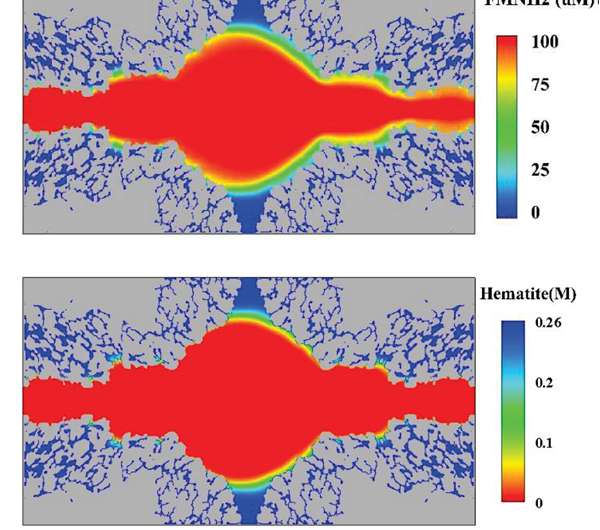Researchers review factors that influence the scaling of subsurface reactions

Will a reaction that quickly releases carbon in a test tube work at the same rate over acres of farmland? The answer depends on the scaling factor, a number that is used to increase or decrease the reaction's rate depending on the scale of observation. Four geochemists at Pacific Northwest National Laboratory (PNNL) devised a new way to calculate the scaling factor. Their method predicts how rates change from the lab to the field. In creating the formula, they reviewed decades of scientific studies delving into situations, such as microbial growth, that influence reaction rates.
Reaction rate models predict how fast a toxin will move or how long nutrients will remain in farmland. These models could be more precise if they included scientific findings at the pore scale, which involves the tiny gaps between and inside soil particles. This study offers a way to apply pore-scale data to larger areas - from inches to miles. In addition, the geochemists' systematic review of the scale-influencing factors highlights the state of the science and future directions.
Creating more accurate models of diverse subsurface areas means considering the pore scale and how it influences larger domains. The team found that the conventional modeling approach, using a numerical grid and the law of mass conservation, doesn't accurately "upscale" results. They went on to devise a formula that allows them to calculate reaction rates at different scales. The formula uses the concentration and distribution of the reactants (the reaction's starting materials). They can then factor in other aspects of scaling, such as microbial growth that plugs the pores.
Researchers at PNNL are continuing to obtain insights into basic biogeochemical processes in complex subsurface environments.
More information: Chongxuan Liu et al. Pore-Scale Process Coupling and Effective Surface Reaction Rates in Heterogeneous Subsurface Materials, Reviews in Mineralogy and Geochemistry (2015). DOI: 10.2138/rmg.2015.80.06
Provided by Pacific Northwest National Laboratory




















